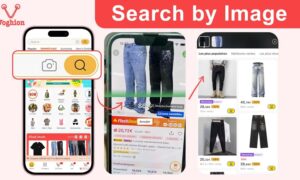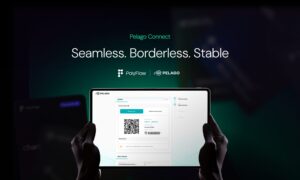An IKEA store visit has always carried an aura of adventure. A customer can wander endlessly between departments, viewing intriguing products that combine style and functionality. During their travels, shoppers often find an enticing assortment of home accessories to transform their own living spaces.
However, a customer who wanted a design consultation often had a less-pleasing experience. With a limited number of design associates, shoppers often found themselves lingering near the design desk while they awaited their turn.
As the minutes ticked away, customers often became increasingly impatient. Some customers may have left the store in frustration, representing loss of potential sales and erosion of customer goodwill.
How the Pandemic Changed the Retail Landscape
Enter the COVID-19 pandemic, which completely disrupted the global retail landscape in 2020. To help slow the virus’ transmission rates, non-essential businesses (including retail stores) were forced to close their doors indefinitely. To survive, many retailers created online stores or enhanced their existing online outlets with additional merchandise.
At the same time, many workplaces across the globe shut down. This action left countless workers stuck at home with plenty of time to surf the Internet and shop online. As might be expected, this set of conditions led to a widespread eCommerce explosion.
When customers finalized their online transactions, they chose to receive their purchased goods via home delivery or the store’s curbside pickup. Stores ramped up their support teams to provide customers with lightning-fast order fulfillment.
Consumers Shift Their Shopping Behavior
When the pandemic began to wind down, stores gradually reopened their doors to customers. Now, however, these cautious shoppers had little desire to wander through a store for hours. They wanted to purchase their merchandise and leave, likely fearing virus exposure while being near other shoppers.
Perhaps most of all, customers had become accustomed to satisfying their wishes with minimum delays. As a result, they had little appetite for frustrating waits in long lines. Younger, tech-savvy consumers were especially impatient. In a highly competitive marketplace, retailers ran the risk of losing young shoppers’ business entirely.
How Delays Impact the Brand-Customer Relationships
Many brands actively cultivate good customer relationships. Customer-focused retailers can get customers in the store via effective use of targeted marketing and advertising. For some demographics, social media is a key ingredient of the marketing mix.
When a customer arrives in the store, they want a streamlined shopping experience with a minimum of obstacles. If the customer needs sales assistance, they will likely tolerate a short wait to receive it. However, if a customer consistently faces long lines at a specific retail outlet, they will often take their business elsewhere.
IKEA Redesigns the Customer Experience
Recognizing that the retail marketplace was evolving at lightning speed, forward-thinking IKEA decided to completely revamp its customer shopping experience. First, company leaders noticed that many customers enjoyed pre-planning their shopping trips. When they arrived at the store, they had their wish lists in hand. Other customers purchased items online for in-store pickup.
With either shopping method, IKEA was successful in getting customers into the store. Once they were onsite, they might purchase additional merchandise and/or discover items to buy on their next trip. However, IKEA needed a way to provide customers with more favorable in-store interactions.
Naturally, IKEA wanted to eliminate the often-cumbersome design consultation lines. To do that, IKEA turned to Ombori, a recognized leader in elevating retail experiences through the use of targeted technology.
Ombori’s Innovative Queue Management System
After analyzing IKEA’s customer queue situation, Ombori designed an effective customer queue management system. When implemented, the system eliminated lines and improved traffic flow in design consultation areas.
Design and Rollout to IKEA Flagship Stores
First, Ombori developed and thoroughly tested IKEA’s custom queue management system. Next, this well-regarded technology consulting company installed the system in six IKEA flagship stores.
Designed to streamline the design consultation appointment process, each system consists of several integral components. A customer website and an Internet-based staff interface are of major importance. Additional components include a collection terminal and six strategically placed digital signage units.
How Ombori’s Queue Management System Works
Inside an IKEA store, customers use the mobile-friendly website or store-based interactive displays to reserve a one-hour session with an IKEA design consultant. Shoppers can select an in-store visit or a video consultation. Customers often request assistance with living room storage, kitchen planning, and wardrobe planning logistics.
After the customer reserves a time slot, and enters their mobile number, they receive an SMS confirmation. Now, the customer has the appointment date and time at their fingertips.
At the same time, IKEA’s sales staff can influence queues and customer flows via the staff interface function. Finally, the Ombori queue management system further increases operational effectiveness by routing online calls to employees with the capacity to handle them.
How the Ombori System Benefits Retailers
The Ombori queue management system provides IKEA (and other retailers) with several important benefits. First, customers who can use their mobile phones to schedule appointments will enjoy a more streamlined shopping experience devoid of annoying delays.
Elimination of in-store lines also improves general traffic flow. When customers are not clogging up the aisles while waiting for their design consultations, they are free to browse the store and ideally find items to purchase.
With an efficient queue management system, shoppers can progress more smoothly through the store. Because they often arrive at the checkout station more quickly, sales associates can process more POS transactions. This generates more revenue and helps to boost the retailer’s bottom line.
Important Benefits for the Environment
Ombori’s virtual queue management system replaces the paper-based “take a ticket” process that generates unnecessary landfill waste. By eliminating this paper trash, IKEA demonstrates good sustainability practices. Most importantly, the Company reduces its use of natural resources and thus decreases its impact on the environment.
Two More Ombori System Applications
The Ombori queue management system, which operates on the Ombori Grid platform, is also applicable to other industries. In addition to diverse retail applications, recreational and hospitality venues can adapt the system to satisfy their own requirements.
Andermatt Ski Resort
At the Swiss Alps’ Andermatt Ski Resort, the COVID-19 pandemic added a new dimension to the existing problem of long downhill ski lift lines. Skiers who were already annoyed about spending valuable skiing time stuck in line were now worried about virus exposure as well. To further magnify the problem, it occurred during the height of the winter 2020 ski season.
To resolve this troublesome bottleneck, Ombori designed a system that utilized skiers’ smartphones to better manage the ski lift queues. When fully operational, the framework resulted in zero lift lines even at the resort’s peak skiing hours.
Radisson Blu Hotel
Andermatt’s Radisson Blu Hotel, located near the ski resort, faced its own queue management problems during the pandemic. Operating during the peak ski season, the hotel suddenly found it necessary to control its restaurant and spa customer flows. If the facility could not accomplish that goal, it could have easily been shut down.
With the nearby Andermatt Ski Resort as an example, the Radisson Blu Hotel asked Ombori to create a similar system for the facility’s restaurant customers and spa clients. The hotel printed a guest informational flyer with guidance on using the smartphone-based queue management system.
Not surprisingly, the Radisson Blu Hotel’s Ombori system worked exceedingly well. The facility was able to regulate the flow of restaurant diners while also promoting guest safety.
Spa clients received a smartphone message alerting them to their soon-to-occur appointments. Besides improving the spa’s traffic flow, guests no longer had to wait in line while wearing their bathrobes.
Looking forward, the Ombori queue management system is likely applicable to many customer-facing businesses. By eliminating delays and logistical issues, customers are free to have a more pleasant experience that should reflect positively on the brand.



































